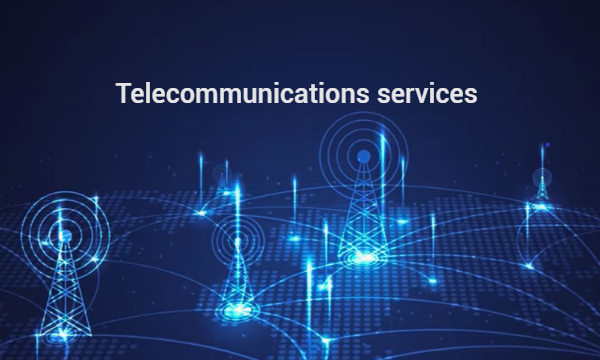
Telecommunications networks are the vital infrastructure that keep the world talking. In both work and play, these networks enable consumers and businesses to meet the demands of a digital society, whether it's hybrid working, online gaming, or video calling friends abroad. As reliance on internet connectivity continues to increase, the spotlight is on the implementation of the next-generation networks which underpin the most exciting developments in technology, from artificial intelligence (AI) to the Internet of Things (IoT).
The world is more connected than ever before!
The telecommunication industry can be broadly separated into mobile (sometimes referred to as wireless) and fixed communications. Mobile services include the provision of voice, text, and data via wireless networks, and are generally with small personal devices such as smartphones or wearables. Mobile use has exploded across the globe over the past decade, with billions of connections consuming over 100 exabytes of data per month. Meanwhile, fixed communications comprise wired services such as fixed home broadband and fixed voice or landline service. While fixed voice usage has fallen amid the rise of mobile communications, the number of fixed broadband connections continues to climb.
All eyes are on 5G and fiber networks.
The upgrade of telecoms networks currently revolves around the introduction of so-called next-generation networks. In the mobile sector, the fifth generation of mobile network technology (5G) is bringing lightning-fast speeds and low latency to wireless users. Meanwhile, fiber broadband networks are enabling ultra-fast broadband connections that outpace traditional copper cable services. However, the rollout of these services has not been straightforward, with the replacement of aging infrastructure requiring the close collaboration of network operators, governments, and regulators.
Over half of mobile connections are set to use 5G by 2030.
In the coming years, much of the telecoms industry's focus will be on the progression of 5G adoption across the globe, with many emerging AI applications dependent on enhanced connectivity. While total 5G adoption is set to surpass 50 percent by the end of the decade, it is also forecast that stark regional disparities will persist, with Sub-Saharan Africa predicted to remain below 20 percent adoption. If unaddressed, such disparities could leave millions of users unable to reap the benefits of the AI revolution.
https://www.statista.com/topics/2665/telecommunications-services/#topicOverview



